Alternative post-harvest product testing
Research has shown that a range of farm management practices have some incremental influence on disease management of crown end rot (CER), from site selection to irrigation practices through to packaging and dispatch. Specifically, good field and shed hygiene practices help reduce fungal spores making it easier and more effective for post-harvest fungicides to do their work. However, to reduce reliance on fungicide use and address issues associated with chemical resistance, research into potential alternative post-harvest treatments are being investigated.
Twelve post-harvest treatments including disinfectants, biological/organic treatments and alternative fungicides have been screened using clusters of bananas and observing the natural development of CER symptoms.
Crowns of each of the clusters were dipped in various treatments (for 30 seconds or 3 minutes), then ripened under standard ripening conditions. Once the fruit was ripened, the symptom development of CER was rated on a scale of 0-7 (7 being the most severe).

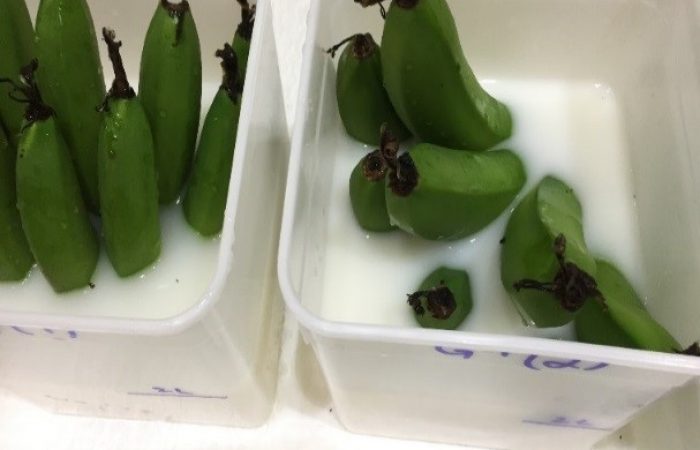
What are the results so far?
This initial screening has indicated that one fungicide (Fungicide B in the table below) appears to be better at managing some of the CER organisms than the currently registered fungicides.
The treatments that showed promise in this initial screening trial require further investigation on larger quantities of fruit and fruit from different production regions. This will help determine if they would be suitable candidates for post-harvest treatment in a commercial setting.
Some of the poorer performing treatments, including a biological product that caused severe fruit burn, will not be further investigated.
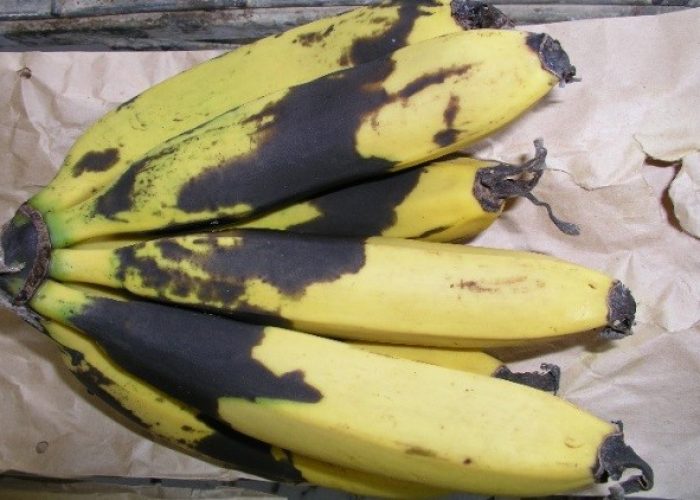
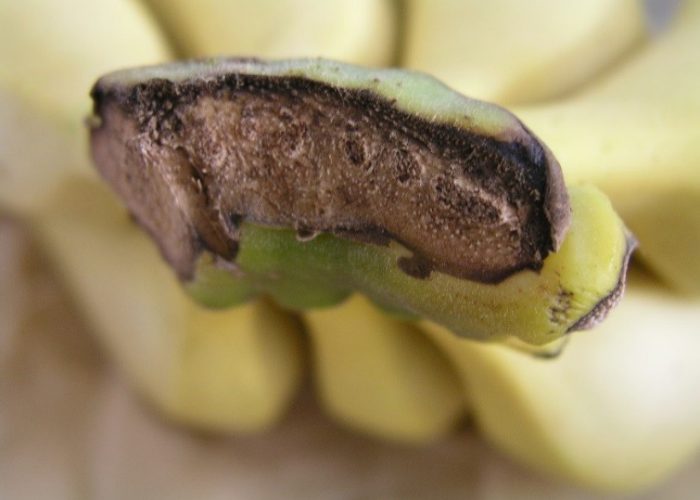
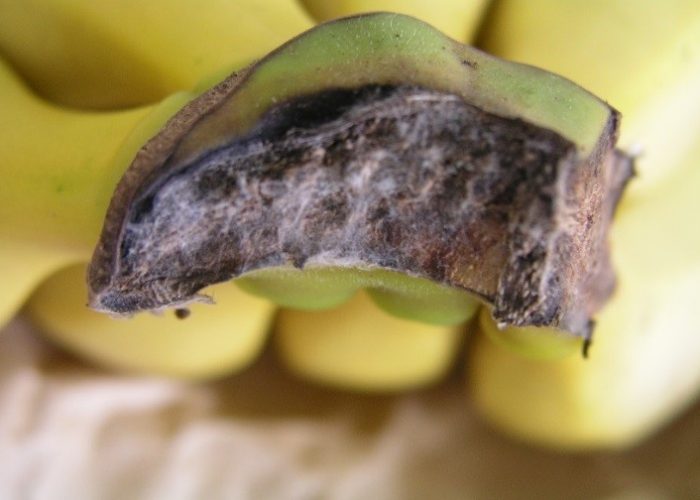
The table below provides a summary of the performance rating of each of the post-harvest treatments tested.
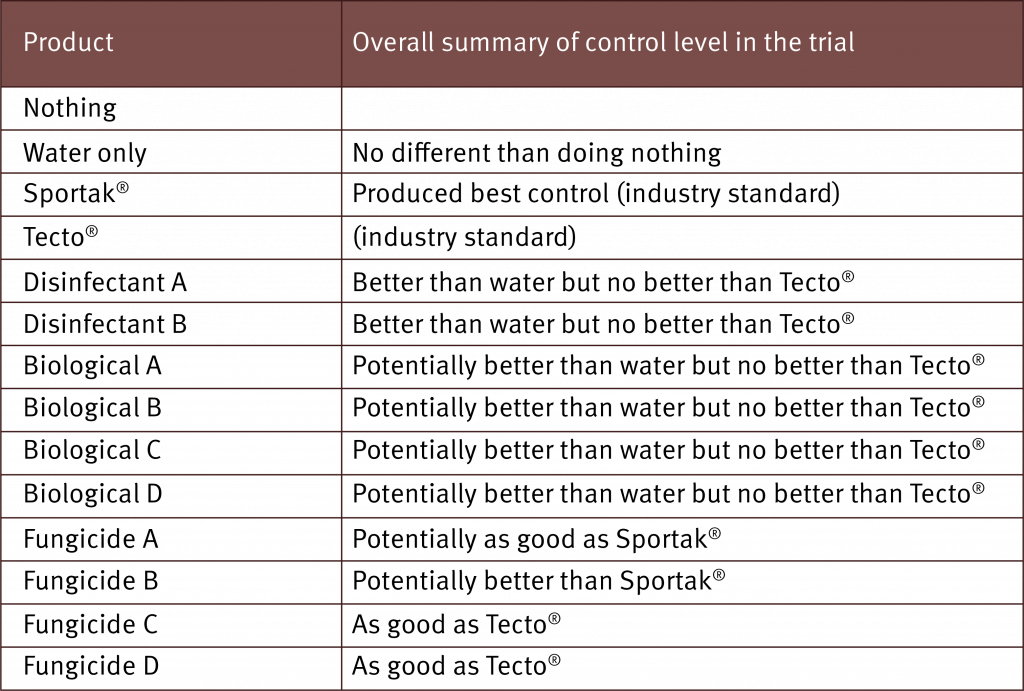
If you would like more information on this trial contact the better bananas team at betterbananas@daf.qld.gov.au or 13 25 23.
This work is funded as part of the Cause and management of crown rot of banana project (BA13011). This project is funded by Hort Innovation, using the banana research and development levy, co-investment from the Queensland Department of Agriculture and Fisheries and contributions from the Australian Government. Hort Innovation is the grower-owned, not-for-profit research and development corporation for Australian horticulture.


